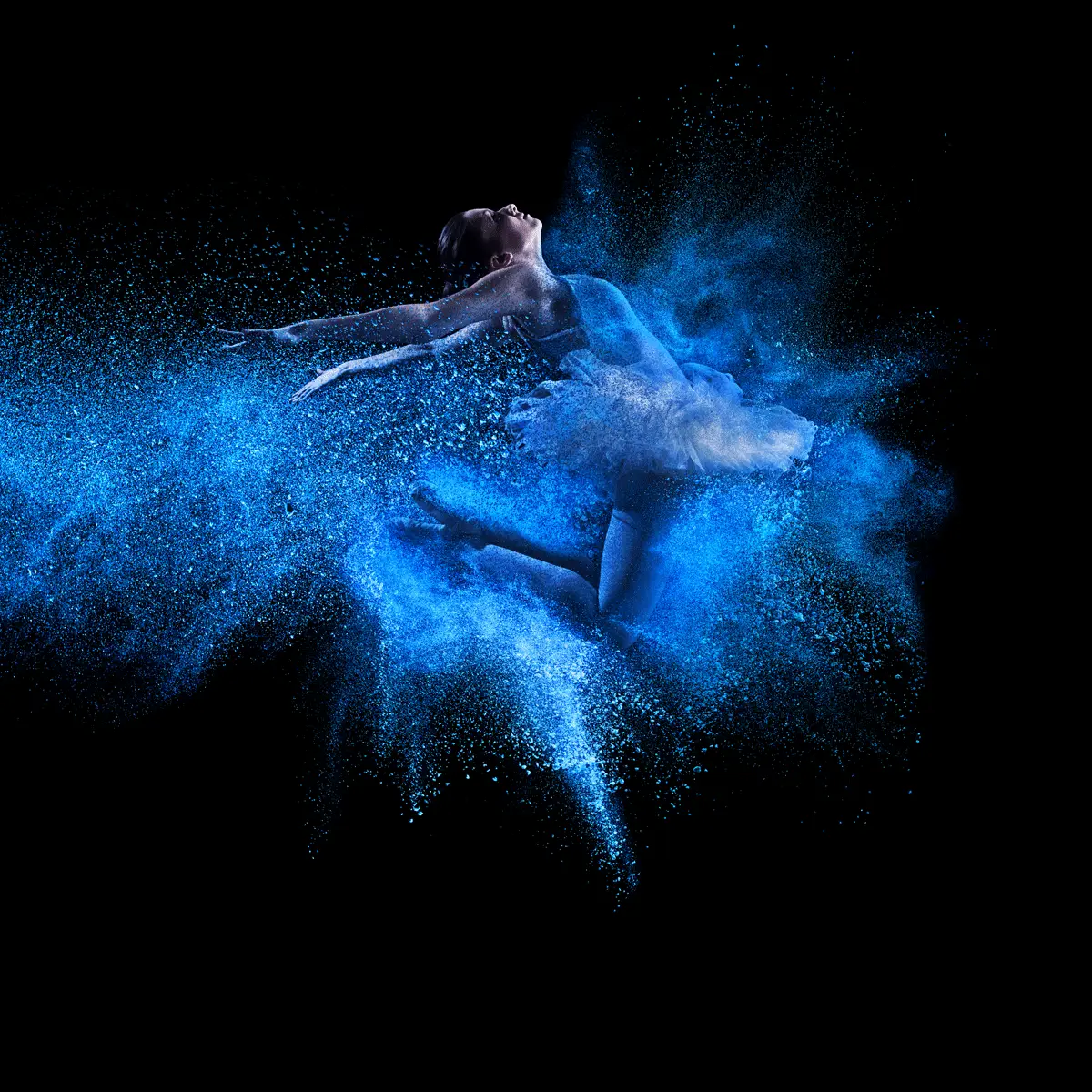
How to Write an Artists Proposal: Tips for Success
This article explains how to write an artist's proposal that stands out. We cover steps from goal-setting to submission, mainly focusing on how to write an artist's proposal. Managing an art business involves attracting clients and expanding freelance opportunities; a well-written proposal plays a significant role in this process.
Key Takeaways
- Define clear artistic goals and vision to guide your proposal and enhance the communication of your project.
- Research your audience and venue to tailor your proposal, ensuring it aligns with their preferences.
- Write a well-structured proposal, including an artist statement, an organized budget, and high-quality visuals to support your project presentation.
- Use a proposal template tailored for artists to create a structured format for your proposals. This will help you present your ideas, requirements, and budgets more efficiently and increase your chances of winning over clients or organizations.
Understanding the Art Proposal
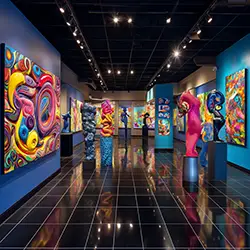
An art proposal is a business tool that allows artists to present their creative ideas for events, projects, or individual works. It bridges the artist and potential hosts, such as galleries, exhibitions, and grant-making organizations. A well-written art proposal can significantly impact an artist's career by securing opportunities for exhibitions, residencies, and funding for various art projects.
Art proposals are not just about showcasing your work; they are about communicating your vision and the value of your art. They provide a structured way to present your ideas, making it easier for decision-makers to understand and support your projects. Whether you apply for a gallery exhibition, an artist residency, or a grant, an art proposal can make all the difference.
What is an Art Proposal?
An art proposal is a document that outlines the content and concept of an artwork or project. The structure of an art-related proposal is the same as any other type of proposal, such as responding to an RFP, applying for a grant, pitching a project, etc.; however, it is tailored with artist-specific chapters. It is typically used to apply for opportunities in galleries, exhibitions, events, and other art-related projects. The proposal should align with the interests of the artist and the potential host, ensuring a mutual understanding of the project's goals and vision.
Art proposals serve as a reference for the artist's intentions and worldview, providing valuable context for students, journalists, and researchers. Over time, these documents can gain historical significance, adding depth to art reviews, bibliographies, and other academic volumes. For artists, writing and expressing their thoughts clearly in an art proposal is an important skill that can enhance their professional practice.
Define Your Goals and Vision
Clarifying your artistic goals and vision before writing your proposal ensures focus and alignment with your creative objectives. Establishing short-term and long-term goals helps you stay organized and achieve specific projects or broader career milestones.
Articulating your goals and vision will guide your proposal writing and help you communicate your project. Remember, the primary purpose of an art proposal is to realize your artistic ideas and present them to a larger audience. That audience will differ depending on the situation, and what you write about will change depending on the situation. A gallery owner being pitched on carrying work on consignment will want to hear different things than a school looking for an art therapist. Prepare thoroughly to organize your thoughts and stay focused on your objectives.
Research Your Audience and Venue
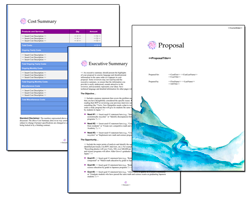
Understanding your audience is crucial for creating an effective artist proposal. Knowing your target audience's demographics (age, gender, income) and psychographics (interests, values, lifestyles) enhances your proposal's impact. Tailoring your content to these insights ensures it resonates with your intended audience.
Researching the venue where you plan to display your work is just as important. Understand the art galleries' previous exhibitions and specific requirements. Aligning your exhibition proposal with the venue's unique characteristics, including any available studio space and preferences, demonstrates your knowledge and commitment, enhancing your proposal's reception.
Engaging with your audience during the creative process provides valuable feedback. This can help refine your proposal and align your work with community needs and interests. Input from diverse readers can clarify your project's purpose and improve communication.
Creating a Compelling Artist Statement
A compelling artist statement is important for a successful art proposal. It provides insight into your artistic vision, background, and motivations. Using simple, descriptive, and personal language makes your statement more engaging and accessible. Regular revisions ensure it remains relevant and reflective of your current work.
Reading your statement aloud ensures it accurately represents your work and engages the reader. Ask honest, straightforward questions about your work to extract valuable information and perfect your writing. Mention where you're currently practicing to give context to your artistic journey.
A well-written artist statement enhances your art proposal and helps you connect with your audience more deeply. It provides a narrative that makes your work more relatable and compelling, increasing the chances of acceptance.
Organize Your Proposal Structure
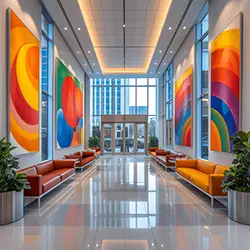
A well-structured proposal ensures clarity and flow. Include a strong introduction, services, experiences, materials, event details, pricing, testimonials, and contact information.
The topics selected for the proposal will be dictated by the type of proposal, audience, and whether there are instructions to follow, such as for a grant application.
Logical sequencing and clear text structure make your proposal easy to follow and understand.
You should include a timeline that clarifies the project's phases and expected completion dates. A comprehensive budget, cost summary, or price list that reflects the proposal content and covers all expected financial details is also crucial.
Adhering to specific gallery or institution requirements for format and structure can also enhance the professionalism of your proposal.
Developing Your Project Idea
Clearly articulating your project idea is crucial in creating an effective art project proposal. Begin by outlining the primary focus and artistic vision behind your work. Additionally, consider how your art proposals can resonate with the audience. This is more important when the project is to create artwork for a client or an installation.
Explain why your project is important and its potential impact. Use specific, clear language that reflects your unique artistic voice and avoid overly complex jargon. Addressing potential challenges in your description shows preparedness and realism in project execution.
A detailed and compelling proposal project description engages the reader and demonstrates your commitment and understanding of the project's significance, significantly enhancing the likelihood of acceptance.
Creating a Detailed Budget
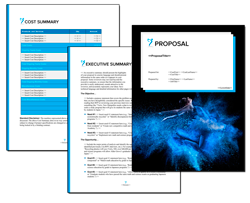
Creating a detailed budget is crucial for planning and managing art projects.
List all anticipated expenses and potential income sources to form a comprehensive budget, including major expenses like:
- personnel
- venue
- material costs
- labor
- shipping
- other expenses
Maintaining a 'budget to actual' report helps track spending and manage project changes. Showcasing diverse funding sources in your budget can boost confidence from potential contributors.
Funding sources may be more important for a business startup funding proposal or grant application to see funding for a project.
Submit a simplified version of the final budget, with detailed expenses grouped under main categories for clarity.
High-Quality Images and Visuals
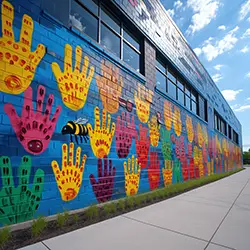
Including high-quality images in your proposal enhances the presentation and appeal of your work, reflecting your professionalism and seriousness towards your art. Select images that directly relate to the proposed project to convince reviewers of your capability to execute the work.
Visual aids like sketches and mockups can further enhance understanding of your creative process. Ensure image lists include annotations for each photo, detailing the artist's name, title of artwork, and medium. If video is more conducive to the project, include video links or embedded video.
Organizing high-quality photographs during your proposal preparation can significantly improve its overall impact.
Writing a Clear and Concise Introduction
A clear introduction sets the stage for the proposal and immediately engages the reader. Clear language ensures the introduction resonates with a broad audience and creates a vivid picture of the project from the outset.
To convey important information, the introduction should quickly state key points such as the project's 'how,' 'what,' 'when,' 'why,' and 'where.' Write the first few sentences to draw the reader's attention, significantly enhancing engagement and encouraging further communication.
Describing the Artistic Process
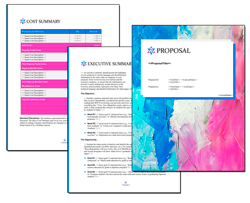
Describing your artistic process clearly is crucial for a good art proposal. Incorporate emotional responses you wish viewers to have to guide their interpretation. Using premium materials and ensuring they are fully insured can provide peace of mind for your projects.
Avoid sophisticated terminology and make your artistic description easy to understand. This will make your proposal more accessible to a broader audience and enhance its appeal.
Highlighting Past Work and Achievements
Showcasing your past work and achievements establishes credibility and demonstrates your experience as an artist. Including descriptions that emphasize your skills and the story behind each piece provides context and makes your proposal more engaging.
Providing a CV benefits experienced artists, showcasing all accomplishments throughout their careers. A professional artist portfolio should include high-quality images accurately representing your style and technical abilities.
Preparing a Professional Cover Letter
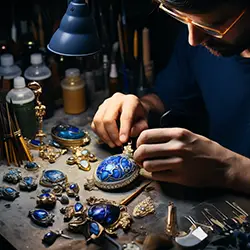
A professional cover letter succinctly introduces the sender and their purpose for writing, highlighting what is included in the accompanying materials.
The introduction should briefly explain:
- who the artist is
- why the proposal was sent
- the desired action from the recipient
- contact information
Confine the cover letter to a single page to maintain the reader's interest and convenience. A well-written cover letter can set a positive tone for the rest of the proposal, increasing the chances of a successful application.
Here are some related samples included in every downloadable Proposal Pack
The AI Writer generates a first draft of these templates - customized to your company, client, and project - in just minutes, giving you a head start on editing. Get any Proposal Pack or Proposal Kit Professional, and all of these samples, and the AI Writer are included.
Here are some related downloadable templates
The AI Writer generates a first draft of these templates - customized to your company, client, and project - in just minutes, giving you a head start on editing. Get any Proposal Pack or Proposal Kit Professional, and all of these templates and the AI Writer are included.
Art Grant Proposals
Art grant proposals are specialized art proposals designed to secure funding from grant-making organizations. While they share similarities with general art proposals, they also include specific information about the grant-making organization and award criteria. Understanding these nuances is crucial for artists seeking financial support for their projects.
What's Different About an Art Grant Proposal?
An art grant proposal is distinct from a general one in several ways. It is tailored to secure funding from grant-making organizations, which means it must meet specific criteria and guidelines set by these entities. These proposals typically include detailed information about the grant-making organization, a comprehensive budget, and a timeline for the project.
When writing an art grant proposal, it is important to research the grant-making organization thoroughly. Understanding their goals and objectives will help you tailor your proposal to their needs, increasing your chances of securing funding. Additionally, art grant proposals often require a more formal tone and language and additional documentation such as a resume, artist statement, and letters of recommendation.
Grants and RFPs typically include instructions on what the artist must include in their proposal and formatting instructions, such as a maximum length. Following all instructions to the letter is critical to not being disqualified.
A clear and concise writing style, a well-structured proposal, and a detailed budget and timeline are crucial components of a successful art grant proposal. By understanding these differences and preparing accordingly, artists can enhance their chances of obtaining the necessary funding to bring their creative projects to life.
Proofreading and Editing
Proofreading and editing ensure clarity and grammatical accuracy in your proposal. Grammatical mistakes and a lack of clarity can negatively affect its consideration. Taking a short break before proofreading helps spot overlooked errors.
Reading your proposal aloud can reveal awkward phrases and improve clarity. Online grammar and spell-check tools can assist but should not replace thorough manual proofreading. Enlisting a professional proofreader and having a trusted colleague review your proposal can help catch errors and provide valuable feedback.
Submitting and Following Up
Submitting your proposal according to specific guidelines ensures all requirements are met. After submission, mark your calendar for expected feedback dates. Following up on your submission can be beneficial, especially with smaller organizations.
A proactive approach to following up shows your dedication. It provides an opportunity to address potential questions or concerns, enhancing your chances of a successful application and securing the funding or opportunity you seek.
Summary
Writing a successful artist proposal involves creativity, planning, and attention to detail. By defining your goals and vision, researching your audience and venue, creating an artist statement, and following the steps outlined in this guide, you can significantly enhance your proposal's chances of success.
A well-written proposal showcases your artistic talents and demonstrates your professionalism and commitment. Take the next steps in your endeavors confidently and clearly, knowing you have the tools and knowledge to create a successful proposal.
 Proposal Kit Professional provides the most content, including legal contracts and a free design theme pack. Plus, advanced software features include custom branding and customizable quoting databases.
Proposal Kit Professional provides the most content, including legal contracts and a free design theme pack. Plus, advanced software features include custom branding and customizable quoting databases. Proposal Pack for Any Business covers this type of proposal and includes samples. There are also some commonly used specialty design themes available:
Proposal Pack for Any Business covers this type of proposal and includes samples. There are also some commonly used specialty design themes available:Photo Design Proposal Packs
Frequently Asked Questions
What is the primary purpose of writing an artist proposal?
The primary purpose of writing an artist proposal is to persuade galleries or institutions to exhibit your work and to secure necessary funding or support for your artistic projects. A well-written proposal communicates your vision and the value of your art.
What should be included in the introduction of a proposal?
The introduction of a proposal should include a cover letter that identifies the artist, outlines the proposal's purpose, specifies the desired action from the recipient, and provides contact information. This ensures clarity and establishes a professional tone from the outset.
How can I make my artist statement more engaging?
Employ simple, descriptive, and personal language to make your artist statement more engaging. Regularly revise and read it aloud to ensure it authentically represents your work and captivates your audience.
Why is it important to research the venue before submitting a proposal?
It is crucial to research the venue before submitting a proposal. This lets you align your submission with their specific interests and requirements, showcasing your expertise and dedication. This tailored approach can significantly improve the chances of your proposal being received positively.
What are some tips for proofreading and editing my proposal?
To proofread and edit your proposal, ensure you check for grammatical and spelling errors, take a break before revising, read it aloud, use online grammar tools, and seek feedback from trusted colleagues. These steps will enhance the clarity and professionalism of your proposal.



 Cart
Cart
 Are you just looking for a template, sample, or software for your art proposals? Click these links to skip down the page and get right to it.
Are you just looking for a template, sample, or software for your art proposals? Click these links to skip down the page and get right to it.




















 Facebook
Facebook YouTube
YouTube Bluesky
Bluesky Search Site
Search Site